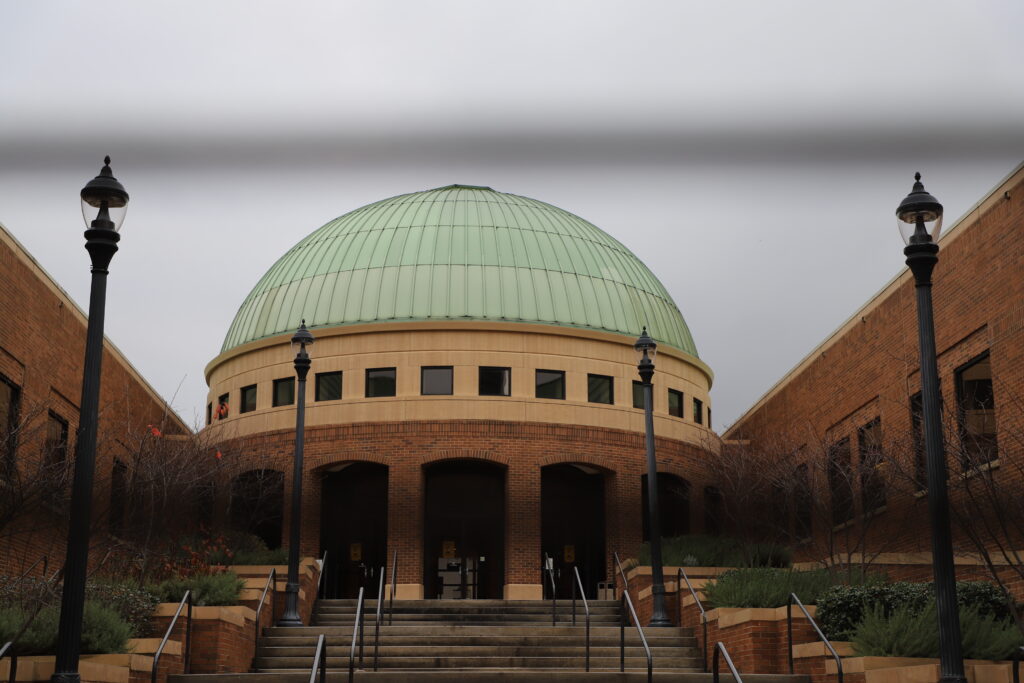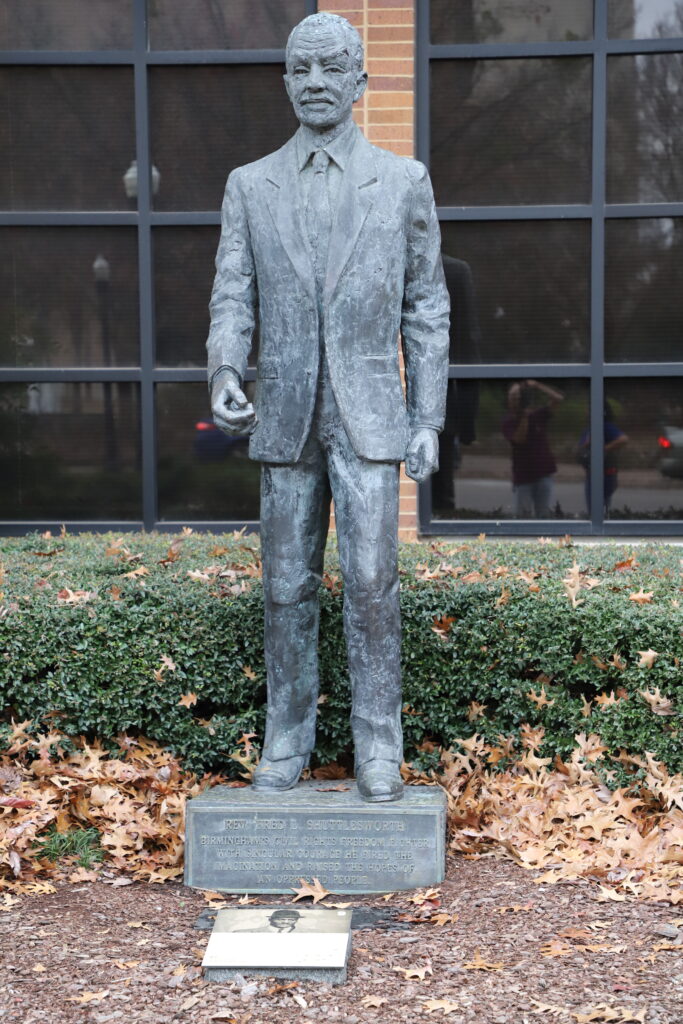Located 91 miles north of Alabama’s capital Montgomery, Birmingham is nicknamed, the “Magic City,” due to its explosive growth during the late 19th century, fueled by the iron and steel industry’s boom. We visited this city in 2021.
- Vulcan Park and Museum
- 16th street Baptist Church
- Kelly Ingram Park
- Birmingham Civil Rights Institute (BRCI)
Vulcan Park and Museum – Atop Red Mountain on a 126-foot pedestal, the world’s largest cast iron statue overlooks the city of Birmingham. This iconic 56-foot Vulcan statue which has become the beloved symbol of Birmingham, was designed by Italian artist Giuseppe Moretti for the 1904 St. Louis World’s Fair. When the fair ended, the Vulcan statue was dismantled and returned to its home city of Birmingham, only to be left in pieces alongside the railroad tracks due to unpaid freight bills. It was not until 1936 that the statue found a suitable home, on top of Red Mountain. A 126-foot pedestal was built of local sandstone, and Vulcan was hoisted into place. A new spear was fabricated to be held high in his right hand while his left hand held a hammer at his side. Vulcan was repainted in an aluminum like finish.
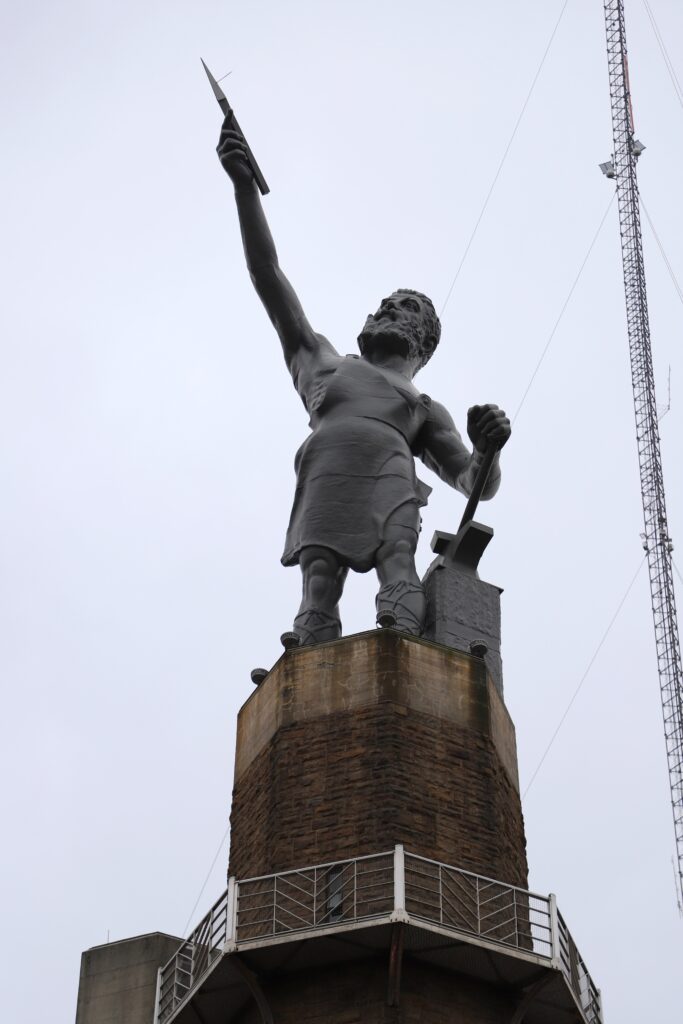
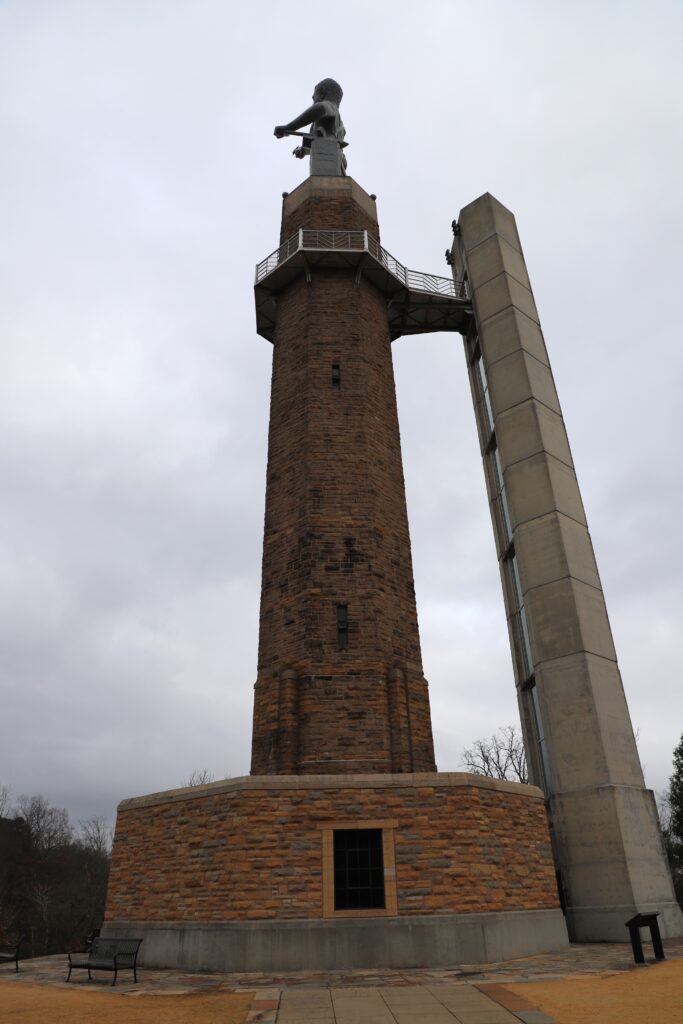
The park grounds and observation tower surrounding Vulcan offer breathtaking panoramic views of downtown Birmingham. In 2021, we paid $6 to see the museum and ride up to the top of Vulcan Tower.
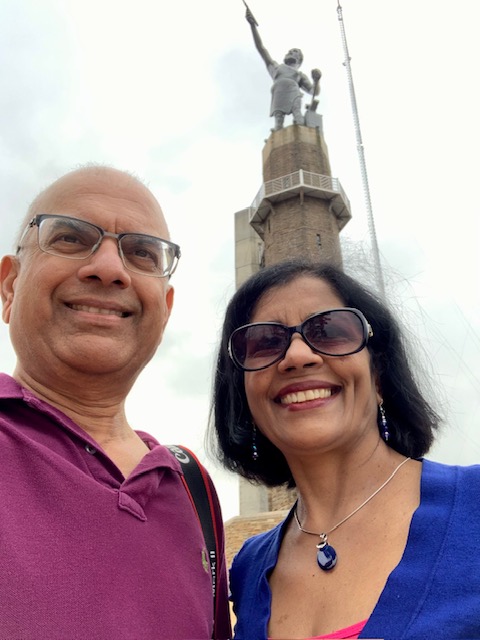

16th street Baptist Church – This church was the first black church in Birmingham. It was built between 1909 and 1911 and was designed and constructed by African Americans. The church is known for its distinctive eclectic style, blending Byzantine and Romanesque elements. In addition to the main sanctuary, the building houses a basement auditorium, used for meetings and lectures, and several ancillary rooms used for Sunday school and smaller groups.
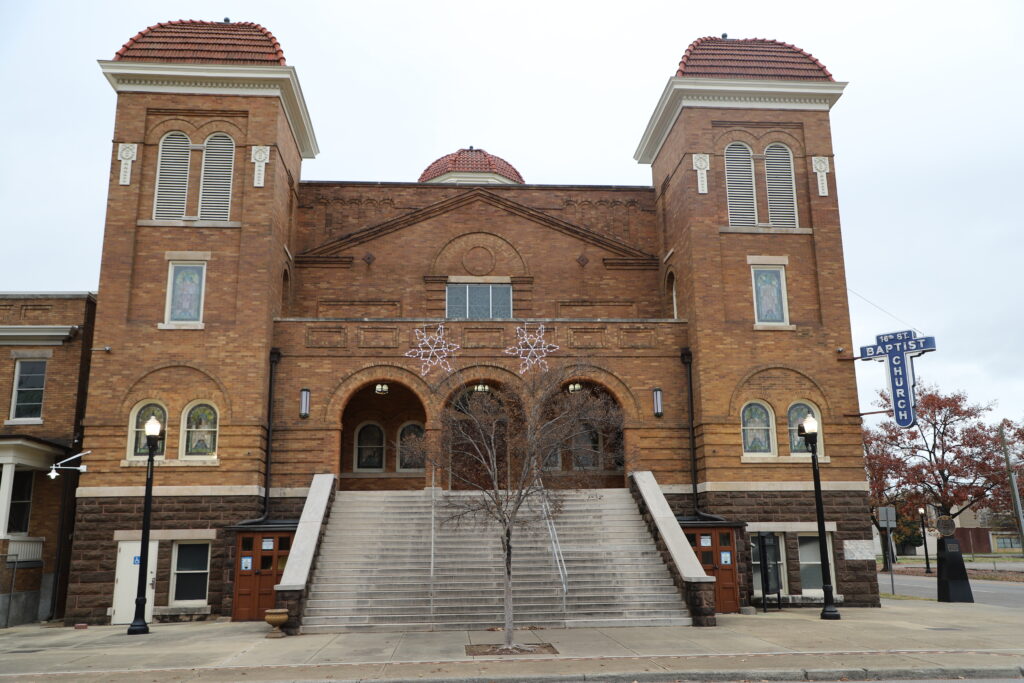
On Sunday, September 15, 1963, the church was bombed by the white supremacist terrorist group, Ku Klux Klan, resulting in the the deaths of 4 girls. This act brought a nation together and played a big part in ensuring the passage of the 1964 Civil Rights Act. The church was restored and reopened in 1964 with the help of donations from around the world. Today, the church is a major tourist attraction.
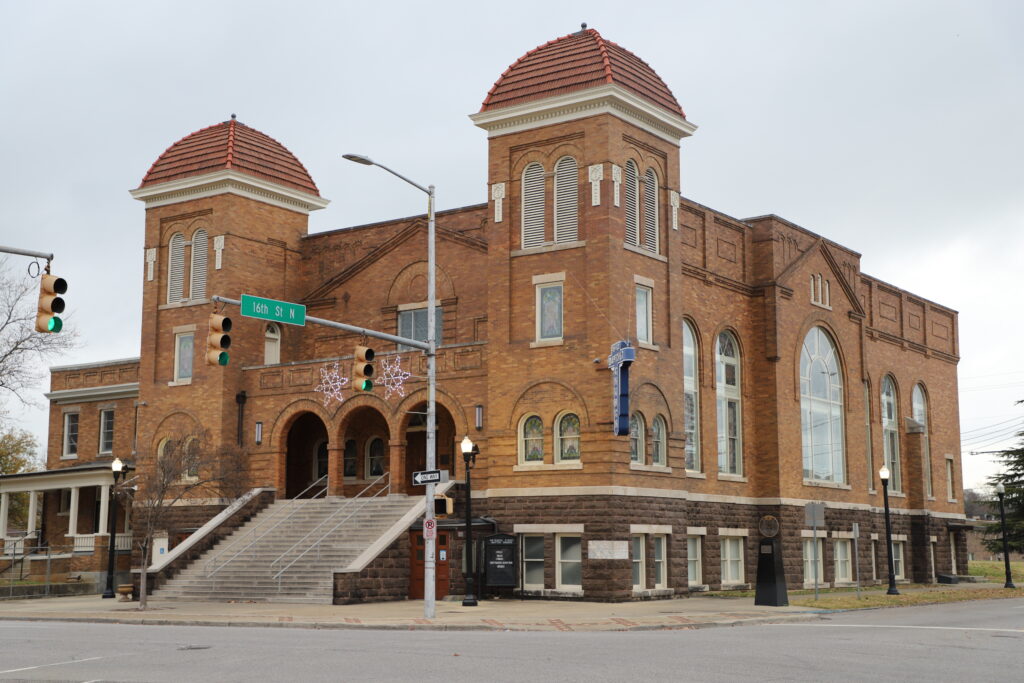
Kelly Ingram Park – Formerly West Park, this 4 acre park is located opposite 16th street Baptist church, and served as a central staging ground for large-scale demonstrations during the American Civil Rights Movement of the 1960s. In 1992 it was completely renovated and rededicated as A Place of Revolution and Reconciliation to coincide with the opening of the Birmingham Civil Rights Institute (BRCI), an interpretive museum and research center, which adjoins the park to the west.
The park contains emotionally powerful sculptures depicting the civil rights struggle in Birmingham. The Four Spirits sculpture was unveiled at Kelly Ingram Park in September 2013 to commemorate the 50th anniversary of the 16th street Baptist Church bombing. Crafted by Birmingham-born sculptor Elizabeth MacQueen and designed as a memorial to the four girls killed in the bombing, it depicts the four girls in preparation for the church sermon at the 16th Street Baptist Church in the moments immediately before the explosion.
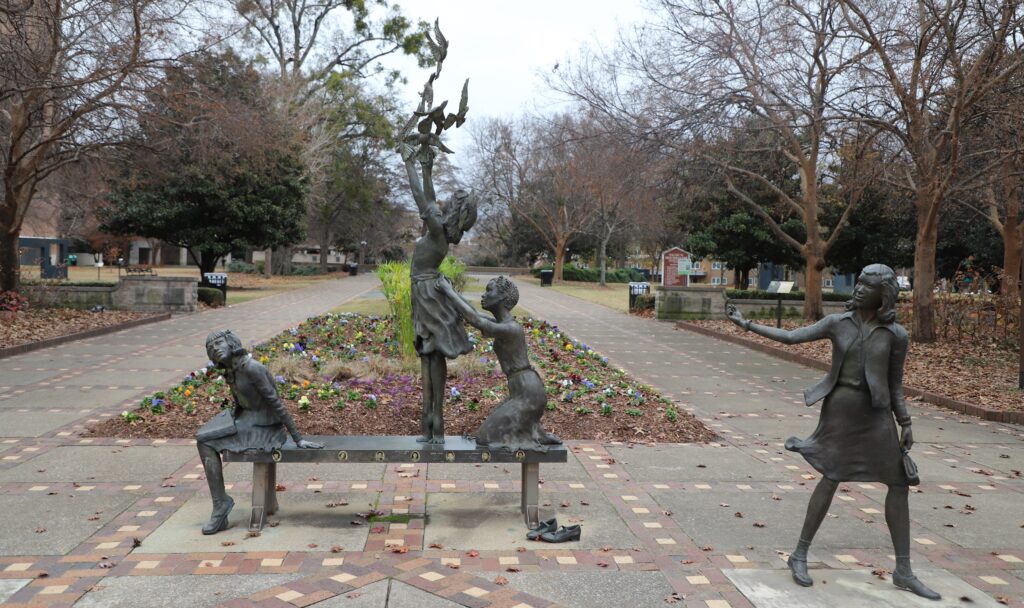
Additional monuments honor the “foot soldiers” and other “unsung heroes” of the Civil Rights movement.
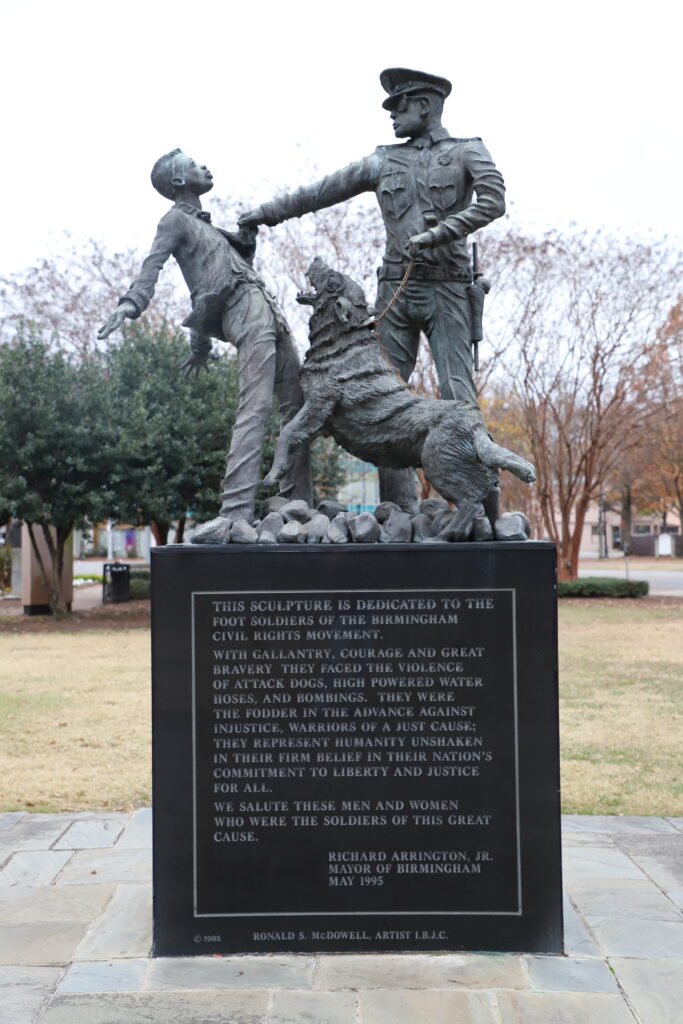
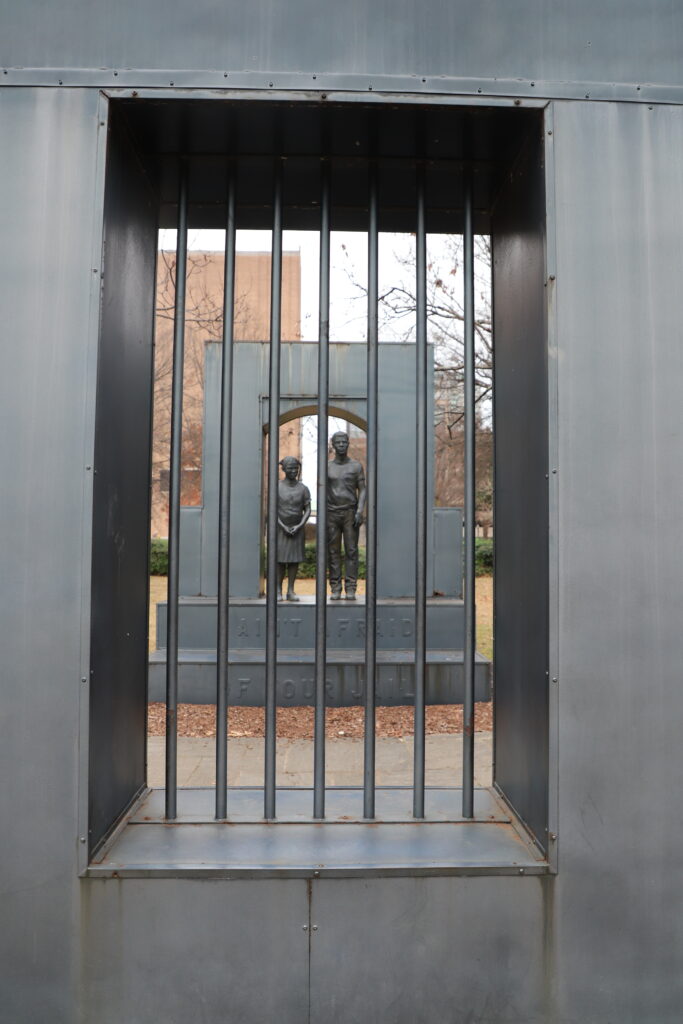
Birmingham Civil Rights Institute (BRCI) – The institute is home to an expansive archive of documents from the Civil Rights Movement and nearly 500 recorded oral histories relevant to the period. Visitors can experience a rendition of a segregated city in the 1950s, as well as examine a replica of a Freedom Riders bus and even the actual jail cell door from behind which Dr. Martin Luther King Jr. penned his famous “Letter From Birmingham Jail.” In addition to its permanent exhibits, the BRCI also has traveling exhibitions on the Freedom Rides, Selma-to-Montgomery marches, 16th Street Baptist Church bombing, Elder Grace, and lesbian families living in the Deep South. The museum also hosts annual celebrations on landmark dates, such as Martin Luther King Jr. Day and Black History Month.
